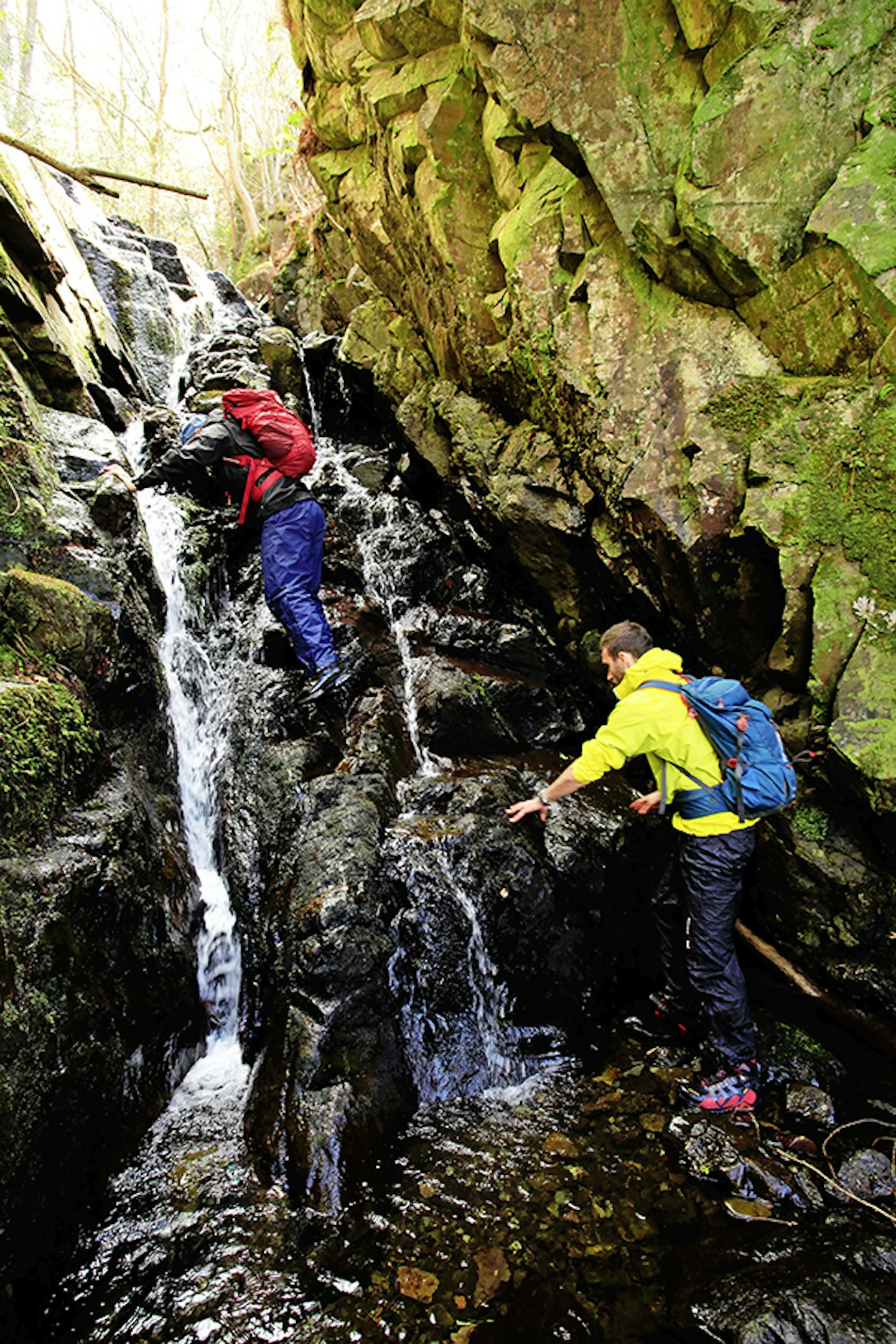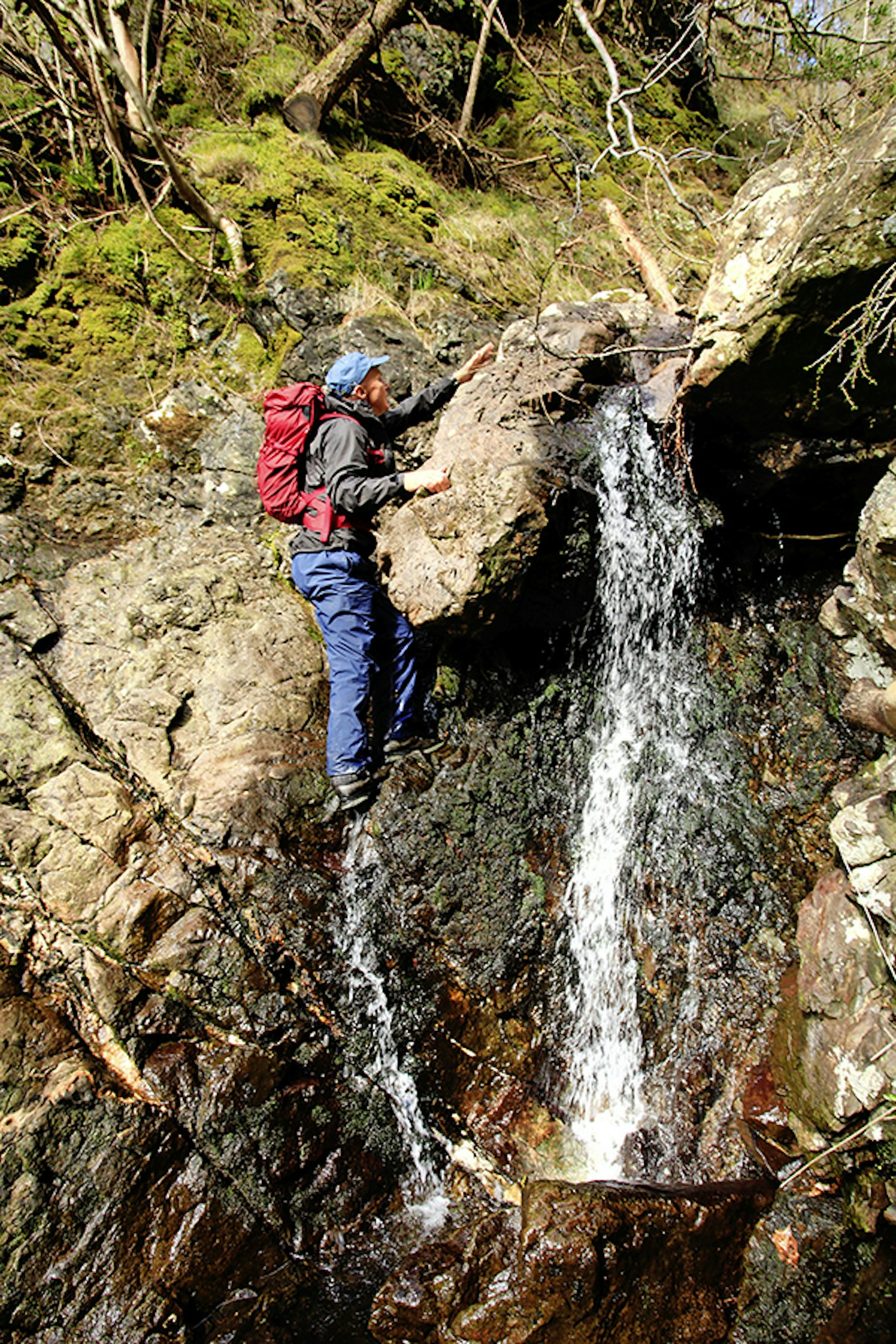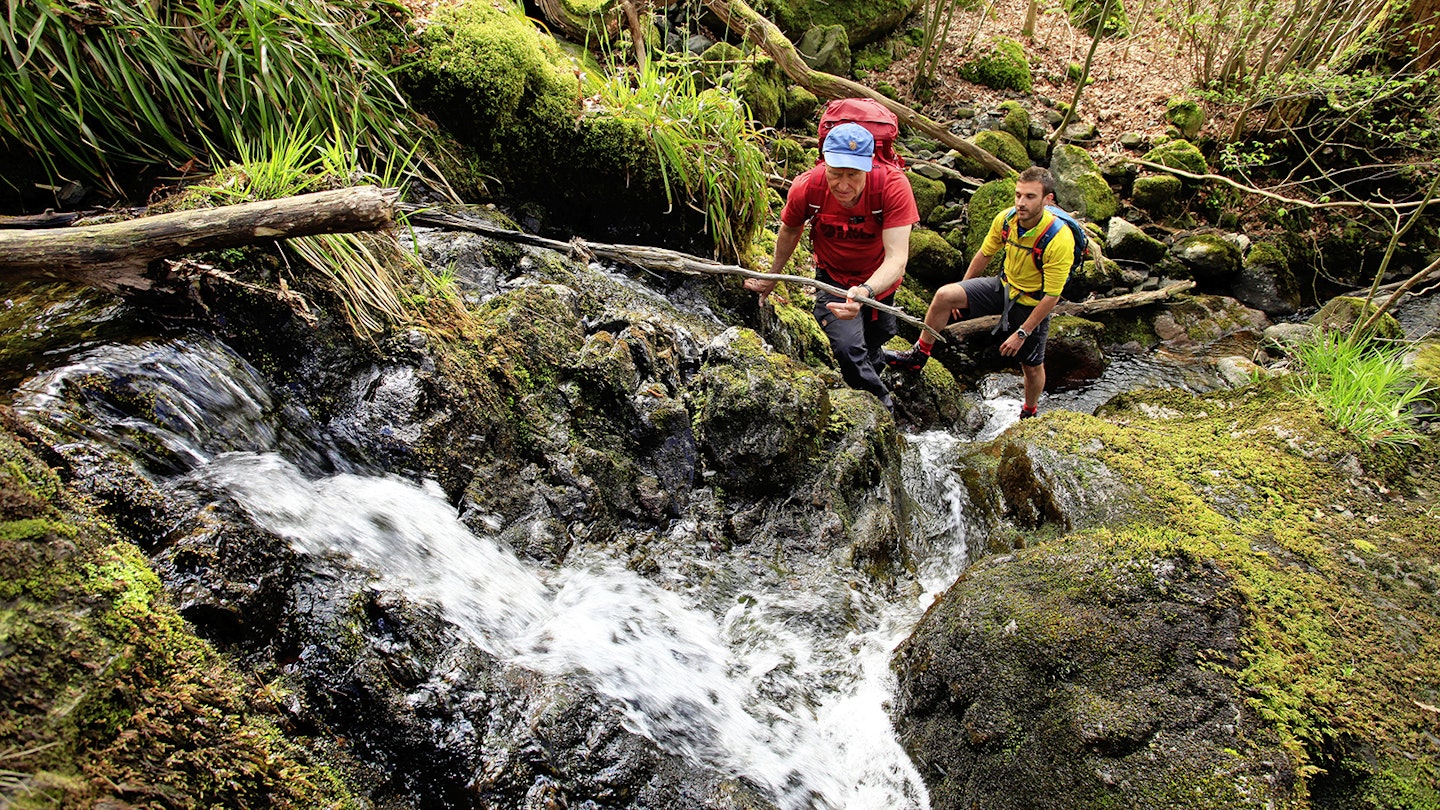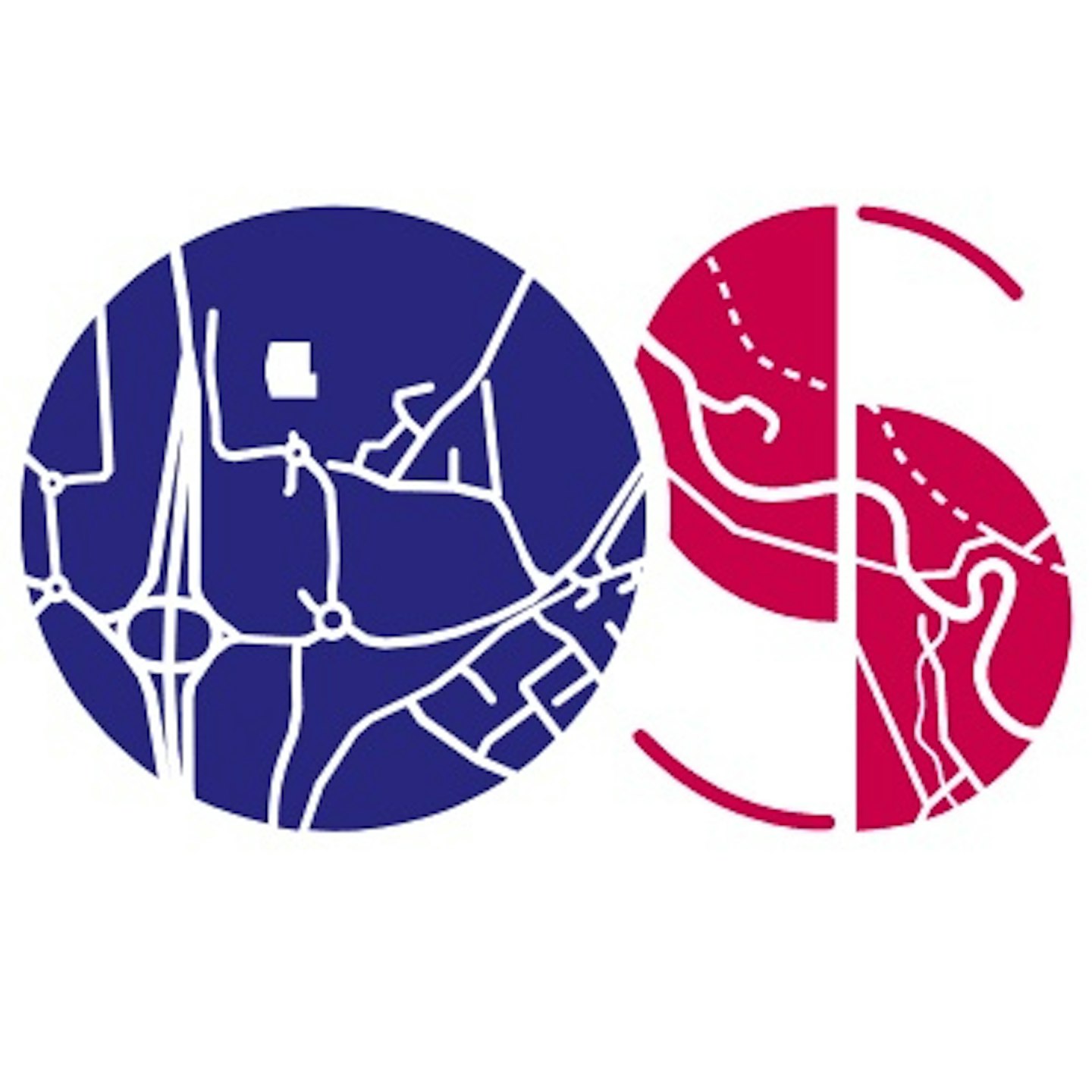Total distance 3km | Total ascent 280m | Scramble rating Grade 1 | Go there on a warm day after a dry spell of weather.
The eastern side of Borrowdale is characterised by wooded crags and beck-streaked fellside. Several of these crags, such as Falcon Crag and Shepherds Crag, are hugely popular with climbers due to the vast number of routes and ease of access. In general, the conifer covered Walla Crag is better suited to walkers, its 379m summit being easily accessible and providing magnificent views over Keswick and Derwent Water. But between it and neighbouring Falcon Crag, Cat Gill flows down a narrow gorge, draining the moorland of Low Moss above into Derwent Water below. And for those who don’t mind their scrambling a little on the soggy side, it provides a fun gill scrambling outing.
The first thing to bear in mind with any gill scramble is this: be prepared to get wet. Cat Gill benefits (or rather, the Cat Gill scrambler does) from a relatively small catchment area, so it doesn’t take too long a dry spell for the run-off to have worked its way through the gill and for water levels to drop. That said, even on low-water days the rocks of the gill can be slippery in places and the pools deep. For this reason it’s best to tackle Cat Gill on a warm dry day where a few splashes of water are no great inconvenience and you can make the most of the afternoon sunlight. The scrambling is fairly easy-going, and a path runs alongside the gill for an easy escape at any time. If you’re a fan of gill scrambling, though, you’re unlikely to want to stray from the rocks of its bed, squeezing every last drop out of the route until there’s no more gill to scramble. Sounding like your kind of thing? Excellent. Let’s get started.
1.
Climbers aren’t alone in appreciating convenient parking. From the National Trust Great Wood car park below Walla Crag follow the path towards Ashness Bridge. At a footbridge leave the path and enter the beck below – this is Cat Gill.
2.
Climb a low fall, then move over to the right side of the gill to traverse along a rock wall, exiting via an awkward little step which is best tackled by staying low.
3.
Ignore a gill-side path and continue in the base of a gill up past a narrow waterfall. After the gill kinks slightly left there are a series of steep but small steps before the gorge narrows into a V-shaped gully.

4.
Traverse above a series of small pools (which are still perfectly capable of giving a good boot-wetting) and clamber up some rock steps which can prove increasingly tricky if the flow of water over them is flowing particularly heavy.
5.
The gorge begins to open up as the rock steps become less narrow, the gill less channelled, and the options for keeping feet dry increase.

6.
At a steep wall, exit the gill on the left side to find a couple more rock steps to scramble before the gill flattens out and merges into the moorland atop Walla Crag.
7.
Onward routes are myriad. The most direct route down is to take the scree path beside Bristly Ridge back to Bwlch Tryfan. A far more pleasing route involves descending the Grade 1 scramble of Y Gribin (after clambering onto the Cantilever Stone, Glyder Fach’s rock-stack summit and the spired turrets of Castell Y Gwynt) back to Cwm Bochlwyd. Or, if this has been part of a bigger day that may also have included a scramble up Tryfan, then Glyder Fawr and the Devil’s Kitchen beckon with a walk around Llyn Idwal as the perfect way to warm down.

Follow this route with HALF-PRICE digital Ordnance Survey Maps for the whole of Great Britain by subscribing to Trail magazine.


